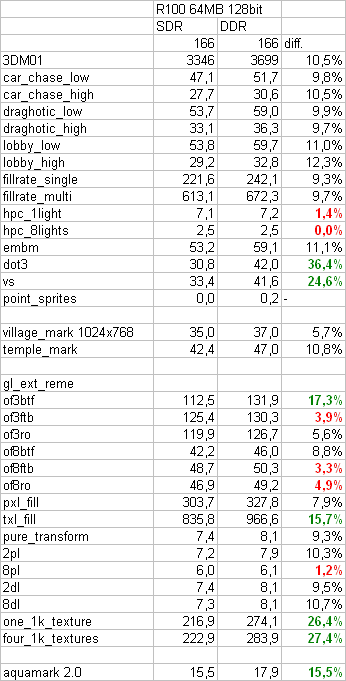Probably isn't. It has actually more bandwidth for it's single pixel pipeline, than Radeon SDR (R100+128bit SDR) for two pipelines. I'll try to find Radeon VIVO (R100 128bit 64MB DDR) and Radeon 7200 (R100 128bit 64MB SDR), clock them equally and run some fast tests...
Last edited by a moderator:







